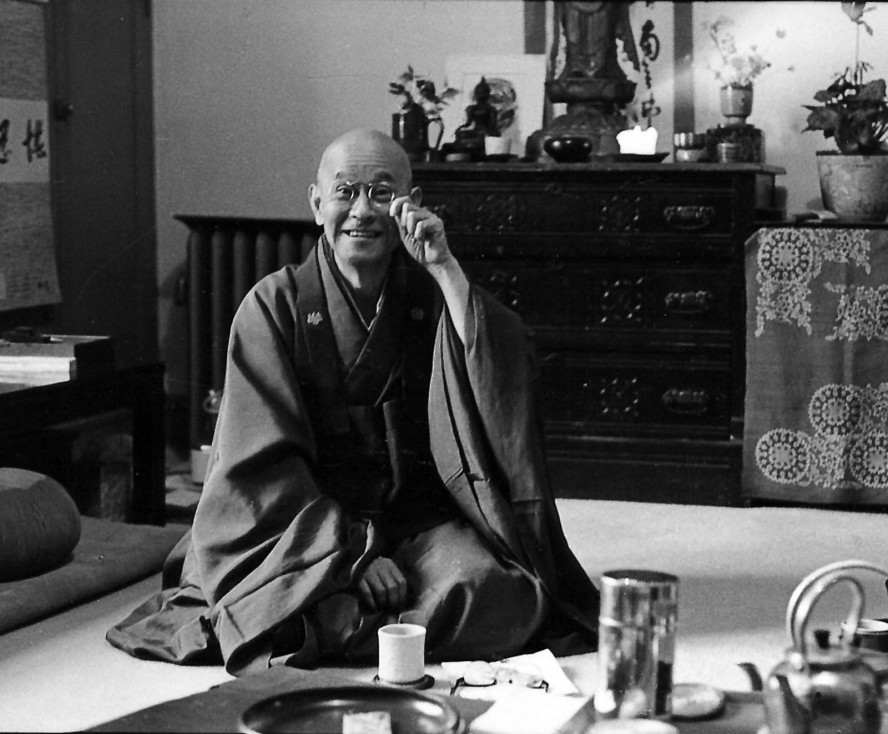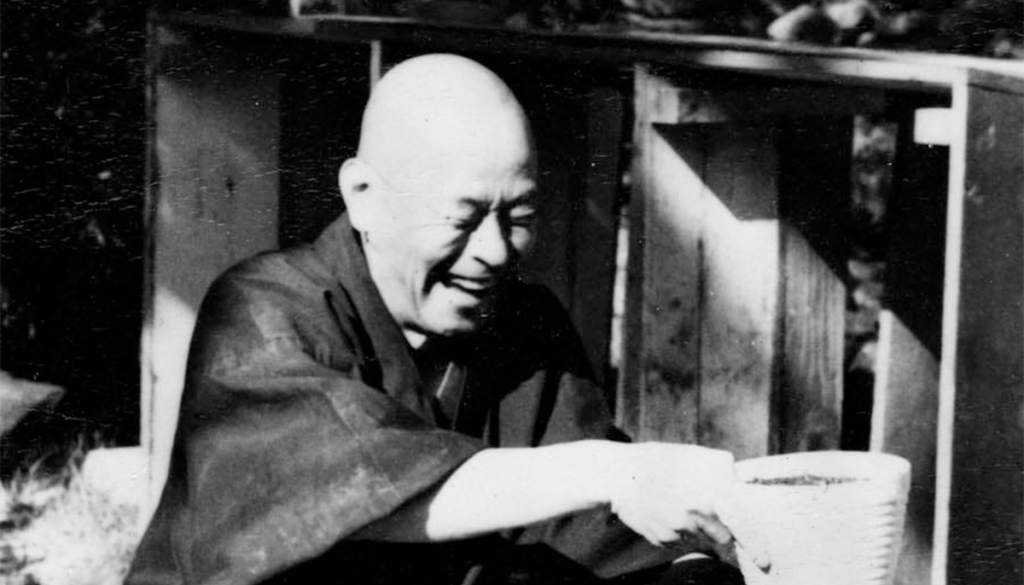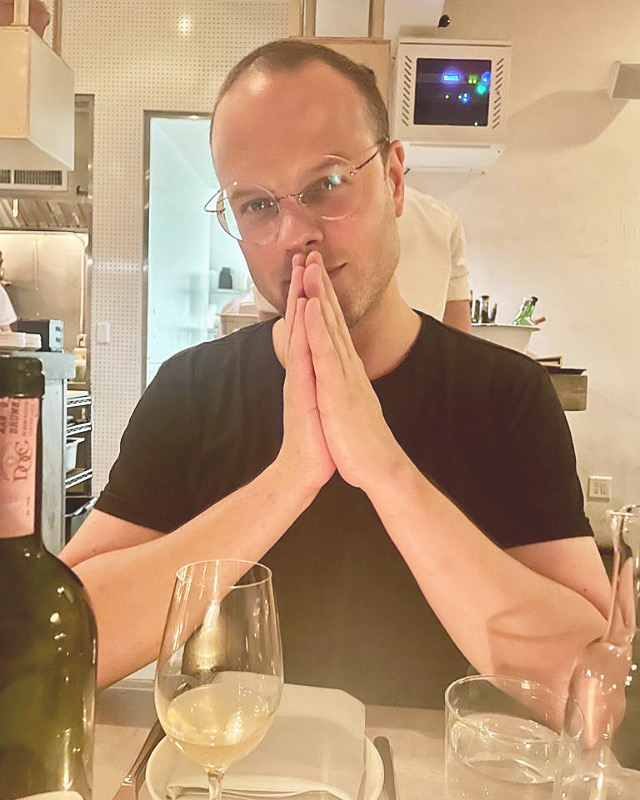Issue #407
Wednesday, August 23, 2023
The Threefold Path
by Benjamin Stuber
The Threefold Path is a Buddhist concept concerning the cyclical journey to abandon kleshas (delusions clouding our true minds) and attain Nirvana. For the purposes of this article I’m epically generalizing, but the Path consists of Theravada (“adhishila” – discipline), Mahayana (“adhiprajna” – wisdom), and Vajrayana (“adhicitta“- mind). Dialectically built upon one another, these elements lead toward enlightenment. [Author’s Note: Buddhism has beautifully evolved over many centuries. I speak about it in this article in a very general and secular sense – not concerning any one modality or any religious affiliation. The source material for this article is my handwritten notes from when I was a graduate student at Naropa University’s Master’s in Contemporary Performance Program.]
What on earth could this have to do with Contrology? The Threefold path suggests an alternative approach to teaching, undermining dogmatic mentalities and helping clients explore holistically through movement. Following a brief unpacking, I will share a sequence of exercises to experientially pursue the “mind” of each concept.
THERAVADA
“It is difficult because it is hard to keep our mind pure and our practice pure in its fundamental sense.” – Shunryu Suzuki Roshi
The “vehicle of the method,” Therevada is the tightest path. It concerns discipline, hard edges, conformity, and exactitude. A solitary journey through an empty landscape without distraction – in the Buddhist context this demands precise sitting posture, verbatim chant, and restriction against taking life, even that of a fly. In Pilates, it reflects classicism – formal adherence, perfect execution, and original order and cueing. Although harsh, Theravada provides safe structure and guidelines to release ego and change the self. The following selection of exercises from Mr. Pilates’ “Return to Life Through Contrology” – reflects these qualities:
- The Hundred
- The Roll-Up
- The One-Leg Circle
- Rolling Back
- The Cork-Screw
- The Swan-Dive
- The Side Kick
- The Push Up
For some, that’s all there is to Contrology. Yet considering the Method was invented by an oddball who lost an eye as a kid whilst scrapping, cavorted in nature like an animal, incessantly developed new exercises and apparatuses, and devoted his life to improving the well-being of the entire human race – perhaps there’s much more to it.
MAHAYANA
“We are aware of the space between the situation and ourselves and anything can happen in that space.” – Chogyam Trungpa Rinpoche
The “vehicle of space,” Mahayana plots the widest possible path – allowing freedom, compassion, and openness. This road is traveled in the company of others with stops to admire scenery, dip toes into babbling brooks, and rest for a picnic lunch. It’s not lazy; it’s curious and free. Mahayana allows other opinions, together with the world. I think of Mr. Pilates galavanting around the Catskills, leaping to and fro with Ted Shawn to demonstrate not only his impressive physicality but his joy of movement. Sharing fun and clever variations embracing modern kinesiology mixed with pure creativity – Mahayana is exemplified by Contemporary schools that innovate based on teachers’ brilliance and clients’ needs. In a sense Pilates’ apparatuses themselves are Mahayana; instead of dealing with the body alone in gravity, one must contend with external forces, springs, bars, and tensions. As my mentor Wendell Beavers once said, “One must tame the local deities” – in this case, the apparatuses. A softened cue, humor, mistakes, curiosity, and lusciously twisty stretches are peppered throughout:
- The Hundred (with a small ball under sacrum)
- Bridge / Single Leg Stretch / Roll-Over / Teaser combo
- The One-Leg Circle (with a small ball under sacrum and bottom leg floating in air)
- Rolling Back (elbows on knees)
- Cork-Screw variation (arms in the air, allowing shoulders and torso to rotate counter to legs)
- Swan variation (lifting up to diagonal, then the other)
- Side Kick variation (greater trochanter on a small ball and bottom leg floating in air)
- The Push Up variation (whilst dropping, one leg reaches up and over other leg like a scorpion tail)
Wobbling limbs, crinkled brows, and smiles appear within the Mahayana world as creatively rigorous play enters the room. And from there we move beyond Contrology altogether.

VAJRAYANA
“Meditation is not a matter of beginning to set foot on the path; it is realizing that you are already on the path … You do not actually begin because you have never really left the path.” – Chogyam Trungpa Rinpoche
Vajrayana is the vehicle of direct energy, exceptions to rules, total freedom, and unbounded power. If not for having traveled the Theravada and Mahayana, this final leg of the journey would be dangerously chaotic – but with practiced discipline, spacious freedom is attainable. After all, we’re not practicing Contrology to get good at Contrology – we’re practicing it to get good at life. Examples abound if one looks carefully: the Jumpboard training for a night out on the town in high heels; “Semi-Circle”/“Serpentine” on Reformer/Guillotine building confidence hanging out in weird situations, why “Flying Squirrel” exists at all. When one can translate the deepest elements of the Method to the totality of one’s life, the rules disappear and Contrology truly becomes magic:
- The Hundred (sing or hum a song instead of pumping arms)
- The Roll-Up (standing – heels up, roll down and “whoop”at the top)
- The One-Leg Circle (standing)
- Rolling Back (squatting down onto the back and up again without using hands)
- Standing Cork-Screw (roll the eyes in a circle following the movement)
- Standing Swan Dive (shake head side to side throughout)
- The Side Kick (as big as possible, allowing torso to fall away from kicking leg)
- The Push Up (standing, performed with hands against those of another person)
We make clients sweaty, limber, and work them out – that’s assumed. But inviting relation to innate, polar aspects of clients’ psychophysiology – their “Buddha nature” – is far more profound. We’re not merely teaching physical skills, but helping people reveal their full selves through movement.
An open mind invites each of these three qualities in at the right times. Humans are hard, soft, playful, weird, contradictory, and capable of giving themselves permission to be. I think the Threefold Path is every human being’s birthright: to be in control, to be related, and to be free. Contrology should strive for no less.
Our birthright is to move better in the face of uncertainty, trauma, and doubt – with bravery, compassion, and joy. Benjamin draws upon decades of experience in the pedagogical, kinesiological, martial, performance, rehabilitative, creative, meditative, and fitness worlds to bring mindbody connection to all. With a passion for the rich history of Contrology, specific focuses on pain, lower back and neck health, mindfulness, and teacher training he brings ancient and modern perspectives into conversation. With an expanding online and in-person catalogue of workshops bringing an unique perspective on Contrology – Benjamin connects people to better movement possibilities. He’s also a cat-dad for Faafo (“Fuck Around And Find Out”), Kóre, Castor, and Pollux.


